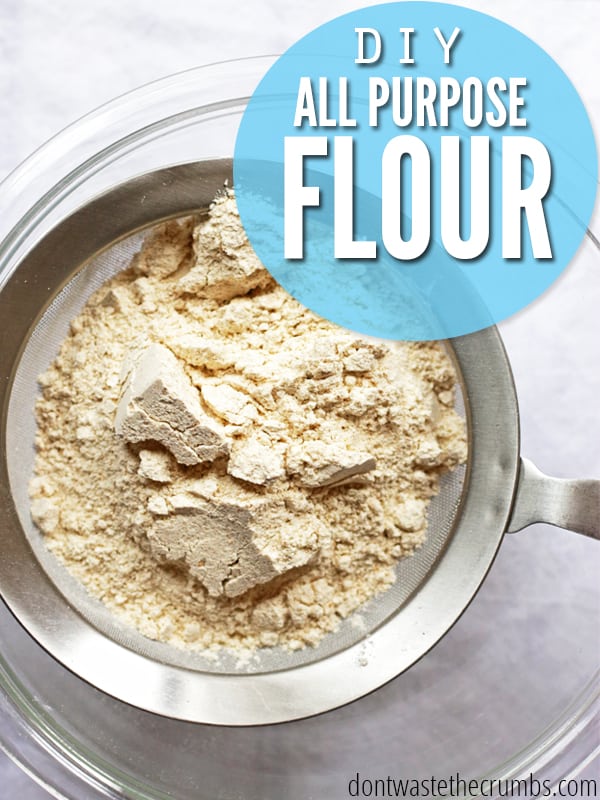
Have you ever run out of an ingredient when you needed it most?
A few weeks ago, Mr. Crumbs promised the kids to make his favorite oatmeal chocolate chip cookies. His problem? We didn’t have any all-purpose flour.
We had oats (for oat flour) and a few different whole grains to make our own whole grain flour (specifically, we had einkorn, spelt, kamut and wheat on hand), but no all-purpose.
He had already committed to cookies, so he couldn’t back out. But running to the store for just one item is a big no-no.
Rule number one in a frugal kitchen is to substitute whenever possible and NOT go to the store. Especially when it’s just for one item. Especially when it’s a “want” and not a “need.” Especially when you have something else on hand that will work just as well (even if it slightly alters the outcome of the recipe).
Mr. Crumbs called me into the kitchen and presented his dilemma with two sets of pleading eyes standing by his side. I suggested making the cookies using oat flour, whole wheat and spelt. We’ve used that combination before and it’s worked well.
According to Mr. Crumbs, “cookies were a treat and he didn’t want to ruin them by making them any healthier than they already were.”
Ok, he got me there. We’ve already switched out half the flour for whole grain, added coconut oil for some variation of healthy fats, reduced the sugar and in this particular batch he was using dark chocolate instead of semi-sweet.
For a man who lived on hot pockets and coca-cola through college, this was a pretty big improvement. I certainly didn’t want to ruin his progress!
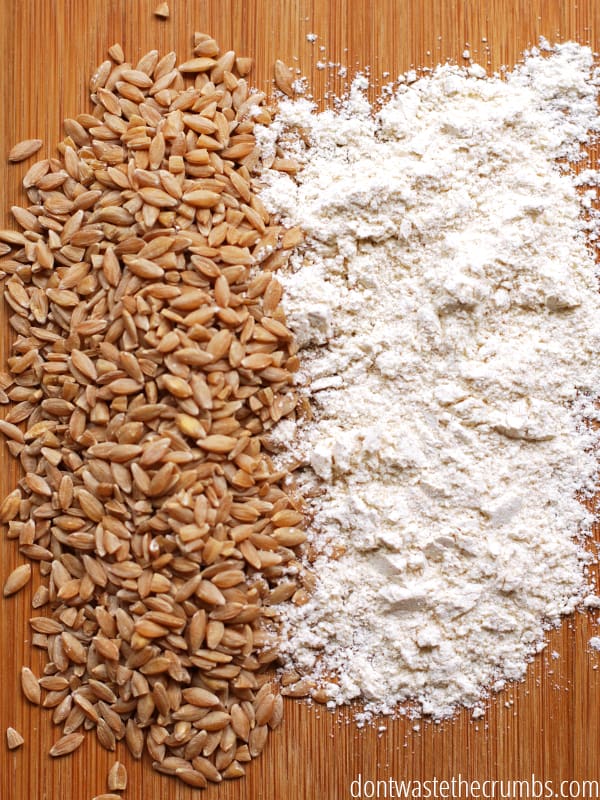
So I started thinking… all-purpose flour is essentially a whole grain, minus the germ and bran. What if we ground flour and then sifted out those two portions?
Call me a genius folks, because it worked!
I tested it again on another day, took notes (and pictures) because I knew you guys would want to see how to make your own all-purpose flour too.. you know, in case you’re in a pinch and you have the urge to make cookies too.
How to Make All-Purpose Flour
Supplies
- whole grain berries (any should work, but I used einkorn)
- grain mill OR a basic coffee grinder and simple food processor
- fine mesh sieve
- 2 large bowls
- 1 small bowl
Method
Grind 1 cup of whole grain berries on the finest setting of your grain mill. If you don’t have a grain mill, you can grind your own flour using an inexpensive coffee grinder and food processor.
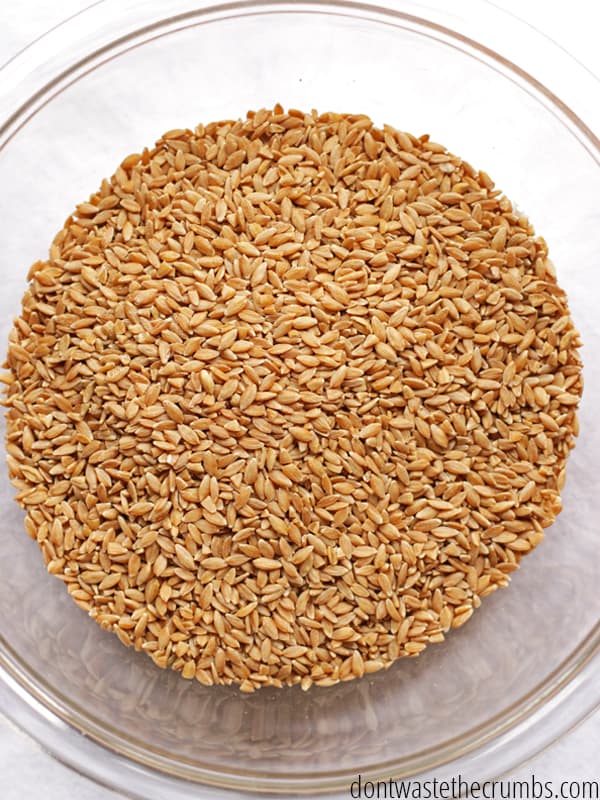
Sifting Round One. Set the sieve over a large bowl and sift the flour. After a couple minutes, you will see the germ and bran remaining in the sieve and the endosperm in the bowl. Place the germ/bran into a separate small bowl.
Repeat with the remaining freshly ground flour until it has all been sifted.
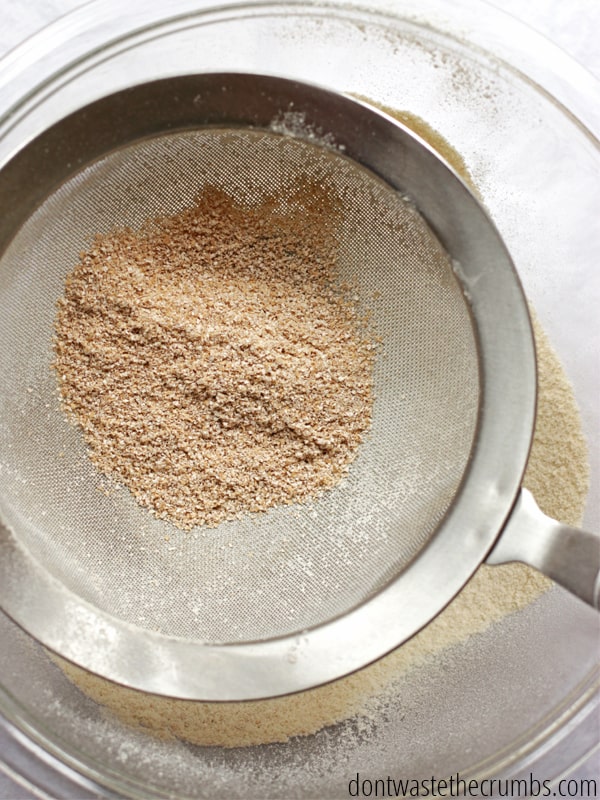
Sifting Round Two. Repeat the sifting process again, but this time use the flour that has already been sifted. You will again see the germ/bran separate in the sieve. Place the germ/bran into a separate small bowl and repeat the sifting process until all the freshly ground flour has been sifted twice.
Store the flour and germ/bran in separate containers. The flour will stay fresh in the pantry for up to one week, or you can refrigerate/freeze for up to 2 months. Store the germ/bran in the refrigerator or freezer for up to 2 months.
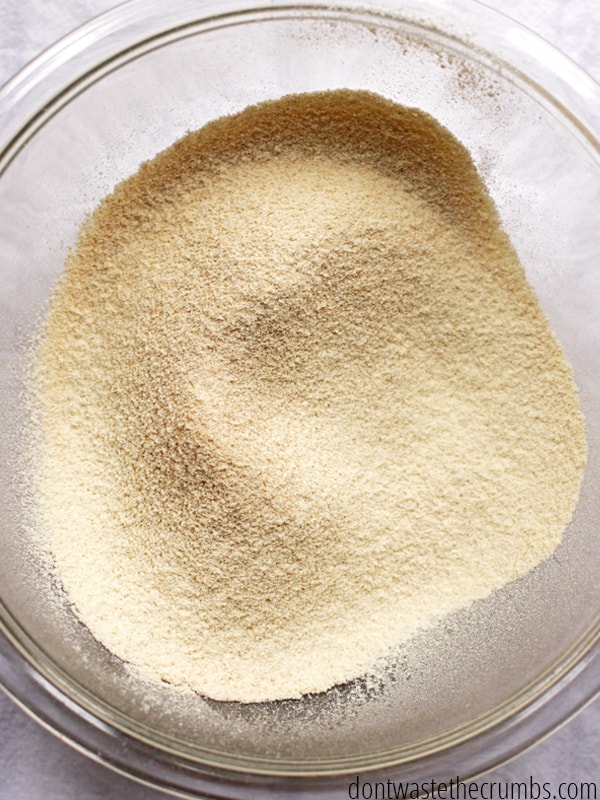
Additional Recipe Tips
You don’t have to sift the flour twice, but I found that this provided a consistency more like all-purpose flour than just sifting once. You could sift a third time, but that would be a personal preference. Two sifts did the job just fine.
If the finest setting on your grain mill isn’t very fine, or if you’re using the coffee grinder/food processor method, you can still make all-purpose flour using this method. You will end up with less all-purpose flour and more germ/bran, but you can repeat the original grinding process and sifting process above to get more out of that first cup if you’d like.
The method above uses just one cup of flour, but you can start with more if you’d like. I just chose one cup as an arbitrary amount so that I wasn’t making more flour than I actually needed.
The germ/bran contain the majority of the fat of the grain berry, so it’s important to keep it stores in the refrigerator or freezer. Use the germ/bran in any recipe that uses whole grains, other than a bread recipe. So homemade granola bars, oatmeal, protein bars, even in cookies or muffins in small batches is fine. You want to avoid adding to the bread because the extra weight of the germ/bran will affect the rise of a whole grain bread recipe.
Why Make Your Own All-Purpose Flour
For many of you, making all-purpose flour is going to be too much work. You’re working two jobs, short on time as it is or don’t have the patience to wait for the coffee grinder… I get that. But if you have the time, I urge you to at least give the idea some thought.
Most of the all-purpose flour on store shelves are either laden with synthetic chemicals to supposedly make it healthier or drenched in chemicals to make it white. Some all-purpose flours are both! If it’s possible to avoid these chemicals and additives, then we should at least give it a shot.
However, if you fall into the short on time/don’t have equipment category, I recommend buying an all-purpose flour that is not enriched nor bleached if at all possible. There are a few brands out there, but Bob’s Red Mill and Jovial’s einkorn flour would be ones that I’ve tried myself and can recommend.
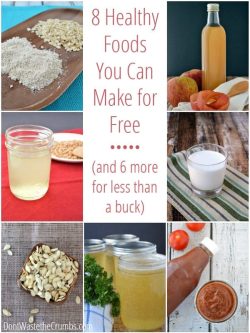
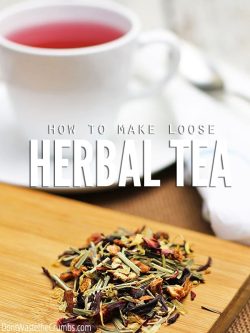
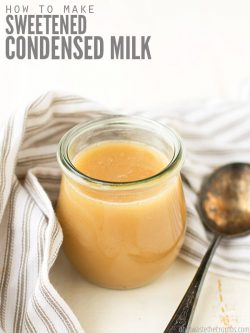

Thank you for the informative article! I am looking every day on how to start doing things my own way and rely less on the ever-changing, unreliable grocery stores.
I have never ground my own flour before, I read about how the ground wheat berries lose nutrients after a few days, but what about the whole berries? Can I buy the berries in bulk without losing nutritional value and grind as needed?
Thanks!
L
Hi LP,
You sure can! That would be ideal! Hope this helps. 🙂
Are the berries soft or hard ? Other sites say use a mix of both.
Hi Glenn – It depends on how you want to use the flour. Hard berries are best for breads, soft are best for sweet, baked goods.
I’ve been milling my own wheat for over five years now. For 25 years I suffered with lupus and fibromyalgia. Before I began milling my own wheat, I could barely walk four blocks.
Our bodies need 43 nutrients to be healthy. One wheat berry has 40. That’s why Jesus referred to himself as the “Bread of Life” (John 6:35) I learned that with 72 hours (3 days) after milling, 90% of the nutrients have oxidized.
What you get is dead flour, which makes dead bread…. lots of carbs, empty calories, and none of the fabulous nutrition God put into it. I mill my own wheat as I need it. Never save your milled wheat for more than 3 days. Yes, it will keep, but the nutrients are gone. I still have issues, but within 3 months my A1C dropped, and I don’t have as much pain from the fibromyalgia. I can now walk normally. It is literally IMPOSSIBLE to buy fresh flour from the store, even the whole wheat flour is dead.
Problem is, I don’t want to buy all purpose flour because it’s dead, dead, dead. I appreciate your information on how to make all purpose flour. Tomorrow I’m going to mix half soft white wheat with half red hard wheat and give it a couple of siftings. Looking forward to a lighter crustier bread than what I’ve been making. Hope it works!
HI Linda!
Thank you for sharing your thoughts!
Love hearing this! I’m switching to making my own flour to help eliminate as many toxins from my son’s food as possible and keep everything he eats fresh and “alive”. I know it will help heal his body and keep him as healthy as he can be with Type 1 diabetes. Thank you for your encouraging testimony! 🙂
Thank you so much for the information. So smart of you to take your health into your own hands. I hope you continue to improve.
Loved your comment. I have tried half of each too but it wasn’t much lighter bread. Ratio that worked for me was 1 3/4 c to 1/4c to get a light crusty bread.
How can I separate germ from the bran?
Hello Chanel,
Set the sieve over a large bowl and sift the flour. After a couple minutes, you will see the germ and bran remaining in the sieve and the endosperm in the bowl. Place the germ/bran into a separate small bowl.
Repeat with the remaining freshly ground flour until it has all been sifted. I recommend doing this two or three times. Hope this helps. 🙂
Hey Tiffany!
Would it work to grind grains in a blender? Or would that be too coarse? The highest setting on my Kitchenaid blender is “Liquify”.
Anyone know of an electric/automatic sifter that works for einkorn? I make so many homemade items with my einkorn flour for my large family that sifting 5-7 cups of flour at a time takes way too long. I don’t want to buy one unless I know it will work!
Ko Mo makes a sifter with 3 different screens.
There is also an attachment for the Bosch universal mixer that sifts flour, but it has just one screen (70, I think) option as opposed to the Komo one with 3 different fineness screens).
I have the bosch mixer and was researching grain mills. After looking at the Bosch attachment and reading the reviews, there was several mentions of the burrs wearing out and needing replacement. I also didn’t like the way it sat on the machine. After talking to the merchant whom I purchased my mixer from, I opted for the Nutrimill grain mill (the classic one). This machine is the bomb, easy to use and easy cleanup. Pricey at $350.00 cad, but very worth it if milling is a regular thing in your home. Hope this helps.
I thought you were referencing mills, I see now it was sifters. Sorry about that, I think I might buy the Bosch sifter now though 🙂
I wanted to thank you for all your research Tiffany, I learned that all purpose flour could be made by me now.
I do want to share this.
Another way to make bread when you don’t have a grain mill or don’t want to grind up dry flakes.
You can deal with grains for making breads, by soaking them. I soak my einkorn grains in water with a little lemon juice or apple cider vinegar. Let them sit in water for 24 hours on counter, covered. Next day rinse and soak again 24 hours. Next morning I rinse very well. I measure about 2 cups of these very soft seeds and put into my powerful blender with a little milk or water and, pulse, pulse, pulse. Blend very shortly, rest, blend. What you will have is a base that you then add your liquids such as milk or water, bread flour or all purpose flour, honey, oil, lecithin, little ground ginger, little gluten flour, yeast, little salt and mix. From there you do what you would with bread dough, knead away. When you let it rise and bake this will be like white bread, soft, but has lots of fiber flakes. Soft, spongy, unusual light sweet taste. Slices and stores well. And you were not anywhere near a grain grinder. Nice to have many ways of doing things, just in case.
So, I guess that flour is sufficiently soaked?
I have just a regular blender, would that work?
And what are your recipes, please.
Thanks. Very interesting! ! wdc